[fig planting method] how to grow figs
With the development of science and technology and people's attention to health care, figs are known as "good medicine and good fruit", "anti-cancer fighter" and "patron saint of human health in the 21st century" because of its unique charm. Experts at home and abroad have found that fig is a treasure all over the body, and it has six functions: preventing cancer, delaying aging, treating acute and chronic digestive tract diseases, increasing human vitality and eliminating sub-health, reducing blood sugar and blood lipids, skin care and cosmetology. Because the cultivation area is very small, we put it into the category of the third generation fruit, which has an extremely broad space for development. What is the method of growing potted figs?
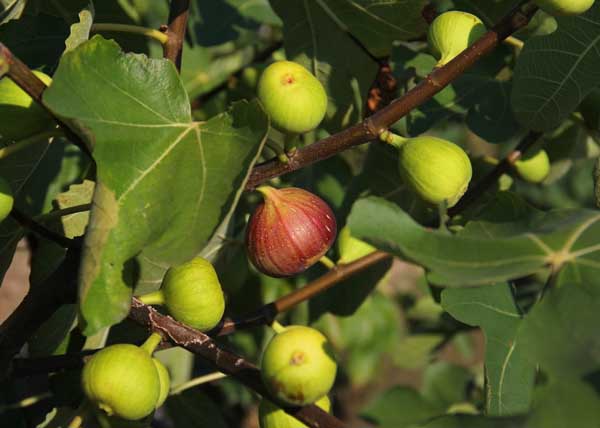
Planting methods of potted figs
The main results are as follows: 1. Fig root system is more developed, which needs larger container cultivation, generally using large tile tank planting, and needs a larger space growth environment, open-air balcony, balcony, courtyard and so on are more suitable for its growth.
2. Figs are not strict with the soil, but it is best to use fertile and breathable soil if potted. When planting or changing pots, add rotten cake fertilizer, chicken manure and other organic fertilizers rich in carbon, phosphorus and potassium, so that fig branches and leaves can flourish and hang fruit early.
3. The watering of potted figs can basically be determined according to the progress of their branches and leaves. When the branches and leaves germinate in spring, the amount of water should be less, and the basin soil should keep a certain humidity. As the branches and leaves grow slowly, the temperature rises gradually, figs also enter the fruit hanging period, at this time to increase the amount of water, sooner or later should be watered once, to keep the basin soil moist. If the watering is not timely, it is easy to produce branches and leaves malaise, fruit drop and other phenomena. After entering the autumn fruit ripening period, it is necessary to reduce the amount of water, too much water will cause the fruit to crack. In addition to controlling watering on cloudy and rainy days, we should also pay attention to prevent stagnant water in the basin so as to avoid waterlogging.
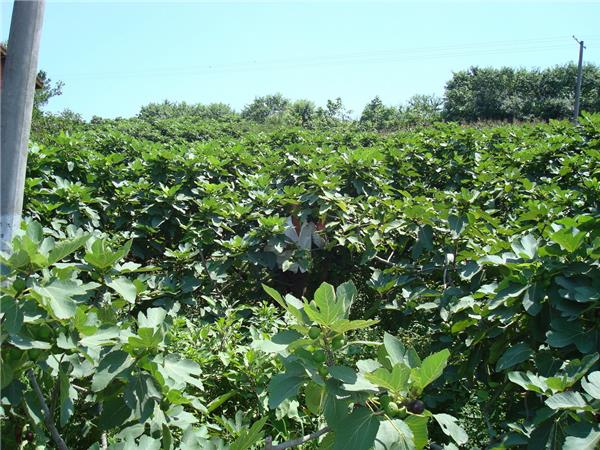
4. Fig shoots grow fast, so we should pay attention to pruning and shaping at ordinary times, especially potted figs. Too high trunk affects the appearance of figs, and it is troublesome to maintain them at ordinary times. Therefore, potted figs must be limited to a certain height and cannot be allowed to grow. The specific approach is to cut off the tip of the tree when the trunk of the seedling grows to about 20 centimeters, to promote its germination and branching. According to their own preferences, trimmed into a certain shape to improve the appreciation value.
Figs are not resistant to cold. Figs preserved outdoors should enter the house in time before and after Frosts Descent in late autumn. Indoor maintenance should be placed in the sunny, well-ventilated balcony living room and other places for maintenance. Figs enter the dormant period in winter and their growth tends to stagnate. At this time, the figs can be flexibly watered according to the indoor temperature. If the room temperature is higher, you can pour a little more water, but if you put it in a room with a room temperature of about 5 ℃, you should control the water and keep the basin soil dry as far as possible, so that you can safely survive the winter.
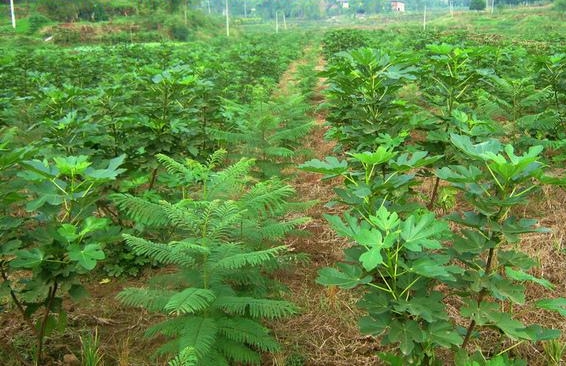
Propagation methods of figs
Cuttings, striping, sowing and other methods can reproduce, but asexual reproduction is commonly used in production practice, and sexual reproduction is only used in breeding.
(1) cuttage propagation: fig branches are easy to produce adventitious roots and are often propagated by cuttings in production. The suitable period is from mid-February to late March. The branches with a diameter of 1.5ml and 2cm were cut from the robust mother plant. Cut the cuttings with a growth of 20-25 cm, insert them into the seedbed according to the row spacing of 5 × 15 cm, and the depth of the soil is about 1 × 3 of that of the cuttings. Watering and covering grass after planting, and paying attention to weeding and topdressing after survival. In autumn, the plant was transplanted again according to the row spacing of 15 × 30 cm, and it could be planted in the nursery in the next autumn.
(2) striping propagation: this method can be used for a small amount of reproduction in the garden next to the house or for early fruit. Generally, horizontal, curved branches or heap strips are often used, that is, the branches are buried in the soil at the level or bend in spring, or at the base of sprouting with soil, and after they take root, they are separated from the mother plant in autumn and winter and planted with roots.
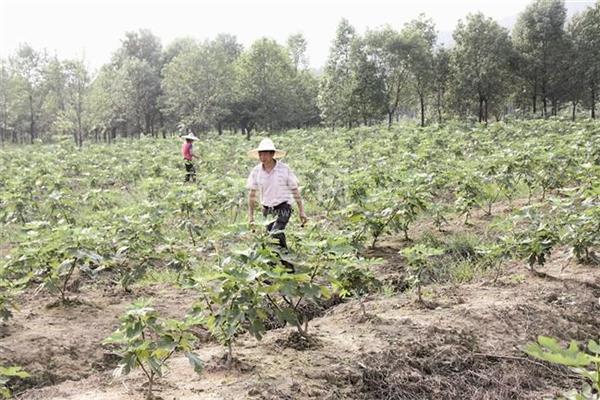
(3) sowing and propagation: in autumn, the ripe fruit is collected, the seeds are taken out, mixed with moist fine sand for stratification treatment, and sown in the first ten days of March of the following year. Sow the seeds evenly in the seedbed, cover with fine soil and cover with grass to moisturize. It can sprout about 20 days after sowing. After emergence, we carried out inter-seedling, seedling transplanting, strengthening seedling management and so on. It can be cultivated for 3 years before it can be planted in the nursery. The fruiting life of seedlings is long, and it is not easy to maintain the good characters of the mother, so it is not often used in production. However, this method plays an important role in breeding, or in colder areas, in order to obtain cold-resistant and precocious new varieties.
Economic, ecological and social benefits of fig cultivation:
1. Fig is rich in nutrition and is a kind of precious fruit. It contains 15-28g sugar per 100g pulp, which is higher than litchi, apple and other fruits, and contains 95% monosaccharide, which is easy to be absorbed by the human body. The content of VC is 2.3 times of orange, 28 times of peach and 27 times of pear. Rich in 18 kinds of amino acids and 2 kinds of essential amino acids for children and rich in copper, magnesium, germanium, zinc, iron, manganese, selenium, boron and other elements. Fruit milk also contains starch Glucoamylase, esterase, lipase, protease, rutin, growth hormone (auxin), alkaloids. Figs also contain a kind of superoxide dismutase (SOD), which is 600 times the price of gold on the market, reaching more than 70,000 yuan per gram. It can have a good inhibitory effect on cancer, inflammation, hypertension, rheumatoid, diabetes, heart disease and other diseases, and has a significant effect on radiation protection and chemotherapy, especially on anti-aging. The soluble solids content of ripe figs is as high as 24%, and the sugar content of most varieties is between 15% and 22%, more than double that of many first-and second-generation fruit varieties. Fig fruit contains 18 kinds of amino acids, 8 of which are essential amino acids for human body, which can nourish, moisturize intestines, appetizer, prolactin and so on.
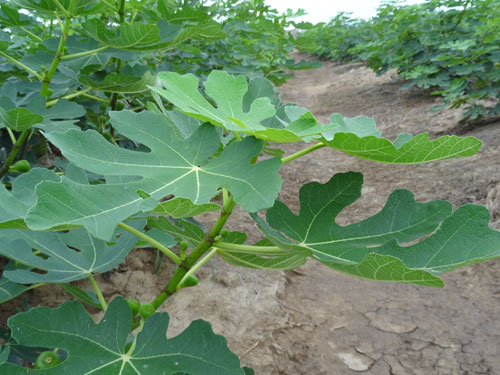
2. Figs have high medicinal value. Its fruit contains a lot of pectin and vitamins. After water absorption and expansion, the fruit can absorb a variety of chemicals. Therefore, after eating figs, various harmful substances in the intestinal tract can be absorbed and then excreted out of the body, which can purify the intestinal tract, promote the proliferation of beneficial bacteria, inhibit the rise of blood sugar, maintain normal cholesterol content, and quickly expel toxic substances. Figs are rich in proteolytic enzymes, lipase, amylase and oxidase, all of which can promote protein decomposition. In addition to the cosmetic effects of helping digestion, relieving diarrhea, treating throat pain, preventing neuralgia and lubricating the skin, the most important medicinal value is that it can significantly inhibit cancer, and its anti-cancer effect has been recognized by countries all over the world. It is known as "the patron saint of human health in the 21st century". Therefore, figs are not only a necessary fruit for people who pursue high-grade and high-quality life and enjoy the pleasure of health care, disease prevention and health care, but also one of the best edible fruits for all tumor patients.
The fruiting life of seedlings is long, and it is not easy to maintain the good characters of the mother, so it is not often used in production. However, this method plays an important role in breeding, or in colder areas, in order to obtain cold-resistant and precocious new varieties.
Economic, ecological and social benefits of fig cultivation:
1. Fig is rich in nutrition and is a kind of precious fruit. It contains 15-28g sugar per 100g pulp, which is higher than litchi, apple and other fruits, and contains 95% monosaccharide, which is easy to be absorbed by the human body. The content of VC is 2.3 times of orange, 28 times of peach and 27 times of pear. Rich in 18 kinds of amino acids and 2 kinds of essential amino acids for children and rich in copper, magnesium, germanium, zinc, iron, manganese, selenium, boron and other elements. Fruit milk also contains starch Glucoamylase, esterase, lipase, protease, rutin, growth hormone (auxin), alkaloids. Figs also contain a kind of superoxide dismutase (SOD), which is 600 times the price of gold on the market, reaching more than 70,000 yuan per gram. It can have a good inhibitory effect on cancer, inflammation, hypertension, rheumatoid, diabetes, heart disease and other diseases, and has a significant effect on radiation protection and chemotherapy, especially on anti-aging. The soluble solids content of ripe figs is as high as 24%, and the sugar content of most varieties is between 15% and 22%, more than double that of many first-and second-generation fruit varieties. Fig fruit contains 18 kinds of amino acids, 8 of which are essential amino acids for human body, which can nourish, moisturize intestines, appetizer, prolactin and so on.

2. Figs have high medicinal value. Its fruit contains a lot of pectin and vitamins. After water absorption and expansion, the fruit can absorb a variety of chemicals. Therefore, after eating figs, various harmful substances in the intestinal tract can be absorbed and then excreted out of the body, which can purify the intestinal tract, promote the proliferation of beneficial bacteria, inhibit the rise of blood sugar, maintain normal cholesterol content, and quickly expel toxic substances. Figs are rich in proteolytic enzymes, lipase, amylase and oxidase, all of which can promote protein decomposition. In addition to the cosmetic effects of helping digestion, relieving diarrhea, treating throat pain, preventing neuralgia and lubricating the skin, the most important medicinal value is that it can significantly inhibit cancer, and its anti-cancer effect has been recognized by countries all over the world. It is known as "the patron saint of human health in the 21st century". Therefore, figs are not only a necessary fruit for people who pursue high-grade and high-quality life and enjoy the pleasure of health care, disease prevention and health care, but also one of the best edible fruits for all tumor patients.
Related
- Wuhan Hospital Iron Tree Blooming Result Was Instantly Frightened by the Gardener Master
- Which variety of camellia is the most fragrant and best? Which one do you like best?
- What is the small blue coat, the breeding methods and matters needing attention of the succulent plant
- Dormancy time and maintenance management of succulent plants during dormancy
- Minas succulent how to raise, Minas succulent plant pictures
- What are the varieties of winter succulent plants
- How to raise succulent plants in twelve rolls? let's take a look at some experience of breeding twelve rolls.
- Attention should be paid to water control for succulent plants during dormant period (winter and summer)
- Watering experience of twelve rolls of succulent plants
- Techniques for fertilizing succulent plants. An article will let you know how to fertilize succulent plants.



